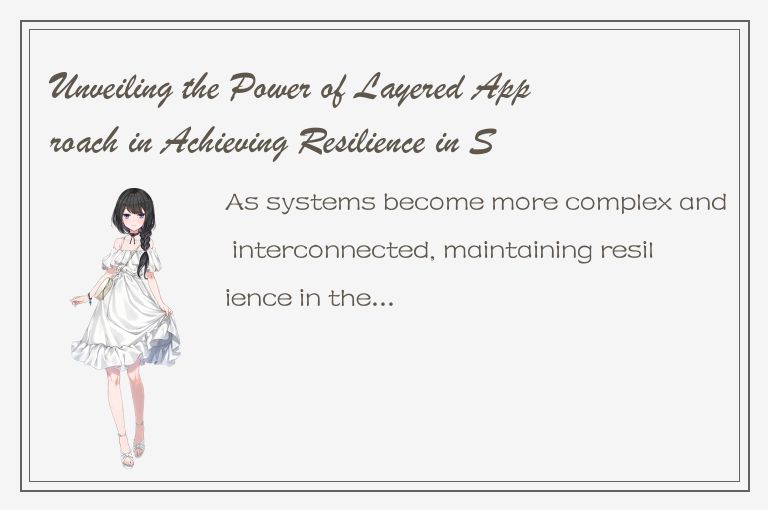As systems become more complex and interconnected, maintaining resilience in the face of disruptions becomes increasingly challenging. To address this challenge, many organizations are turning to layered approaches to system design and management. In this article, we will explore the power of layered approaches in achieving resilience, focusing on the role of layering in promoting redundancy, modularity, and adaptability in systems.

What is Layering?
Layering is a design principle that involves dividing a system into distinct functional layers, with each layer providing a specific set of services to the layer above it, while abstracting away lower-level details. Typically, a layered system consists of a hierarchy of layers, with the highest layer providing an interface for users or applications to interact with the system, and the lower layers handling more basic functions such as communication, data storage, and hardware control. The layered approach enables efficient communication between layers and simplifies system management by enabling each layer to be independently developed, tested, and maintained.
The Benefits of Layering for Resilience
One of the primary benefits of a layered approach to system design is that it promotes redundancy, which is the ability of a system to continue operating even in the face of disruptions such as hardware failures, cyber-attacks, or natural disasters. By having multiple layers performing similar functions, systems can be designed to be more fault-tolerant, as any failures in one layer can be compensated for by others.
In addition to redundancy, layering also promotes modularity, which is the ability of a system to be decomposed into self-contained modules. This enables systems to be more easily modified, upgraded, and replaced, as each module can be modified independently of others. Consequently, layering can make systems more agile, allowing them to adapt to changing requirements or environments more quickly.
Finally, layering can also promote adaptability, which is the ability of a system to adjust its behavior in response to changes in its environment. By having layers that can perform different tasks, systems can be designed to be more flexible and able to adapt to different scenarios. For example, a smart transportation system could have multiple layers for traffic management, route planning, and vehicle control, each of which can adapt to changing traffic conditions or weather patterns.
Examples of Layered Approaches in Resilient Systems
Layered approaches are widely used in many different sectors, ranging from telecommunications to aviation to cybersecurity. For example, in telecommunications networks, the Open Systems Interconnection (OSI) model is a seven-layered model that divides networks into distinct layers, with each layer performing a specific function such as data transmission, routing, or application support. This layering enables efficient communication between different network devices and promotes fault-tolerance, as any failures in one layer can be isolated from other layers.
In aviation, layered approaches are used to ensure the safety and reliability of aircraft systems. For example, the flight control system of an aircraft typically consists of multiple layers, with each layer handling different aspects of flight control such as navigation, communication, and flight guidance. This layering enables the system to detect and compensate for failures in any one layer, ensuring the safety of the aircraft and passengers.
In cybersecurity, layered approaches are used to protect against cyber-attacks and minimize their impact. For example, the Defense in Depth approach involves using multiple layers of security controls, such as firewalls, intrusion detection systems, and access controls, to create multiple barriers that attackers must overcome to compromise a system. This layering enables the system to be more resilient to attacks and provides multiple opportunities to detect and respond to intrusions.
Conclusion
The power of the layered approach in achieving resilience in systems cannot be understated. The layering design principle can promote redundancy, modularity, and adaptability in systems, making them more fault-tolerant, agile, and flexible. Layered approaches have been successfully applied in many different sectors, including telecommunications, aviation, and cybersecurity, and can be used to enhance the resilience of any type of system.




 QQ客服专员
QQ客服专员 电话客服专员
电话客服专员